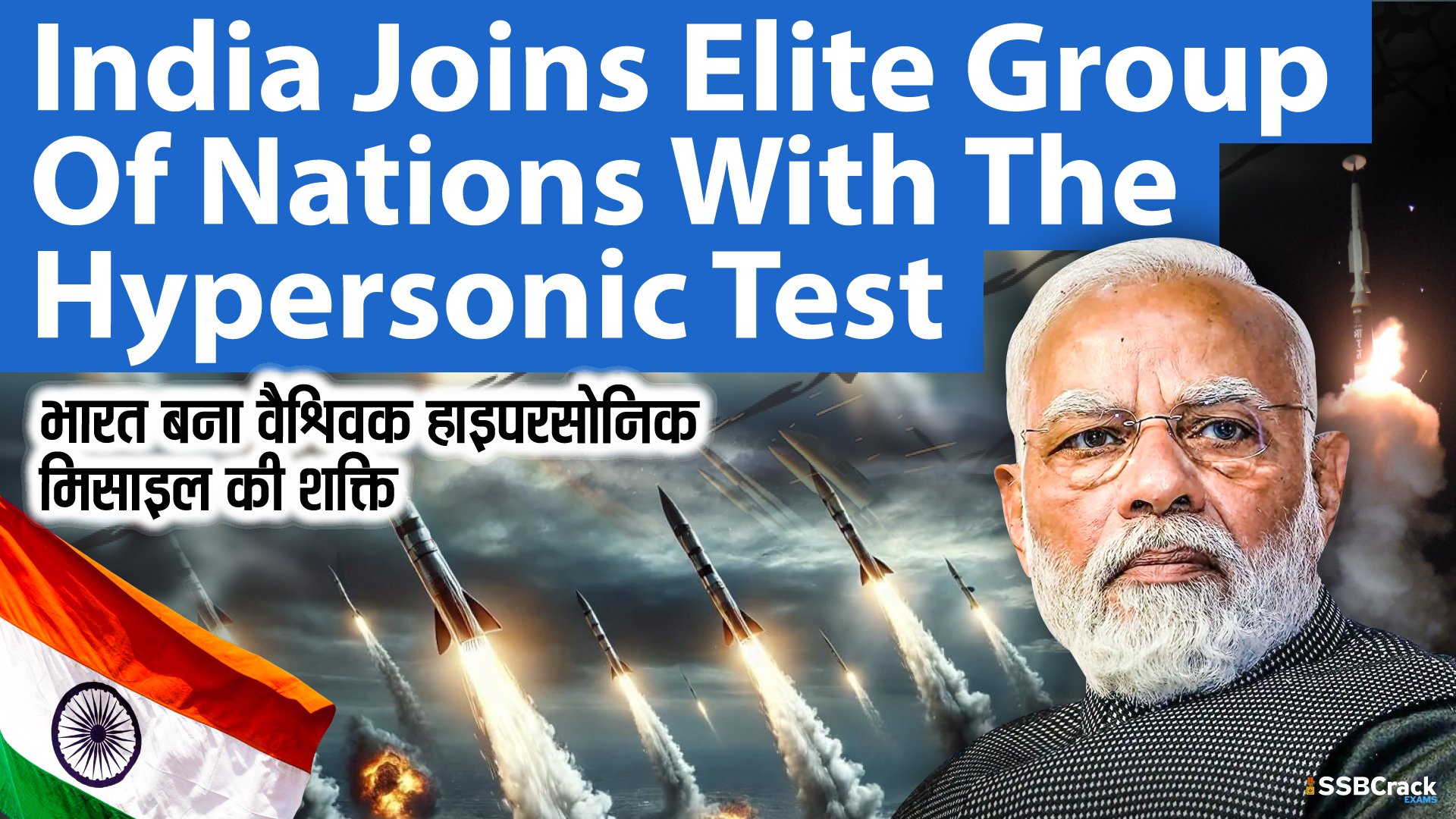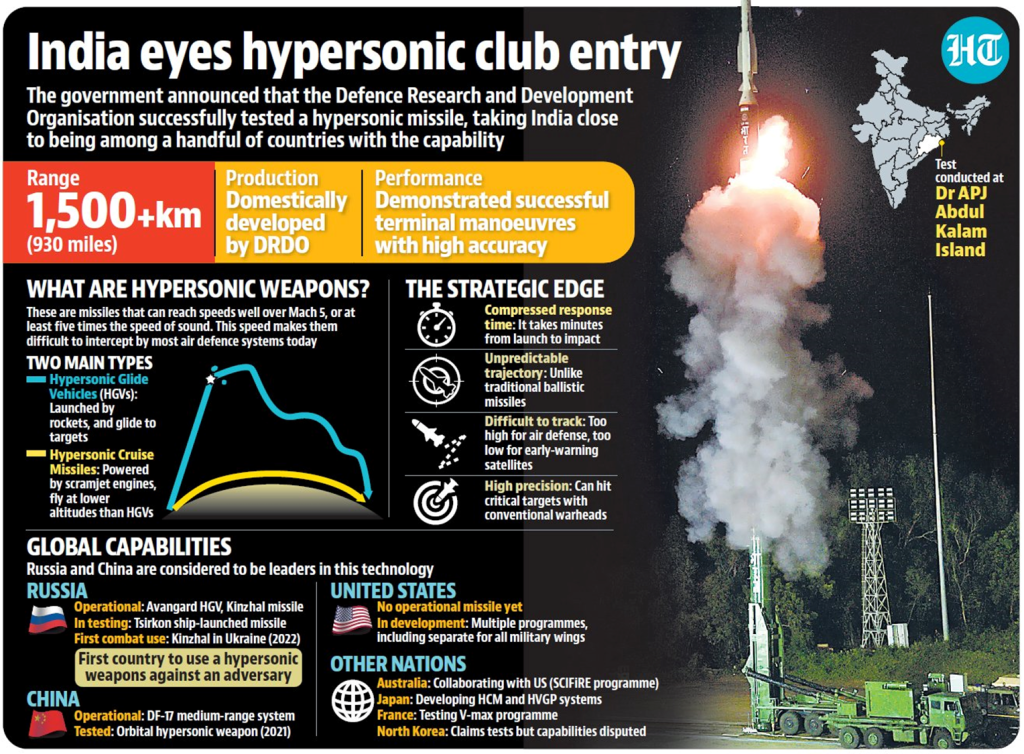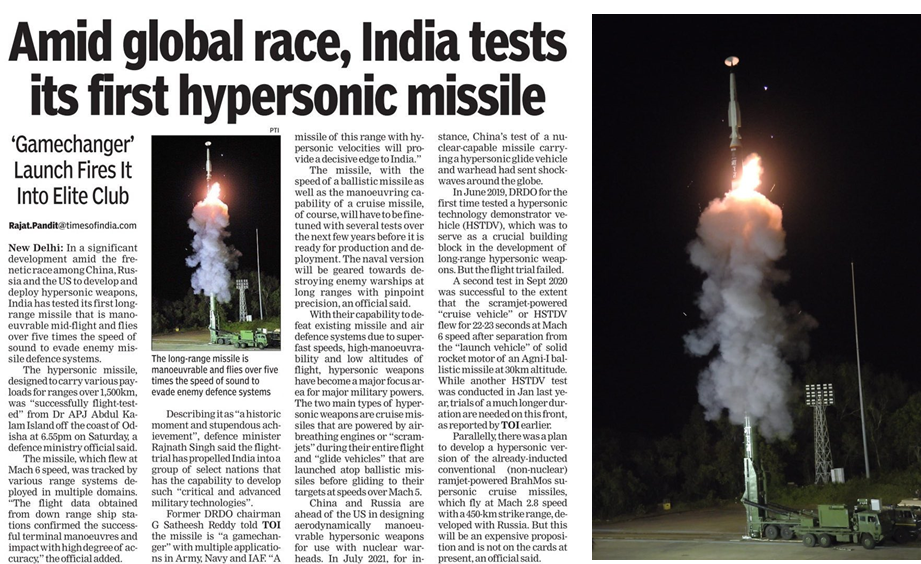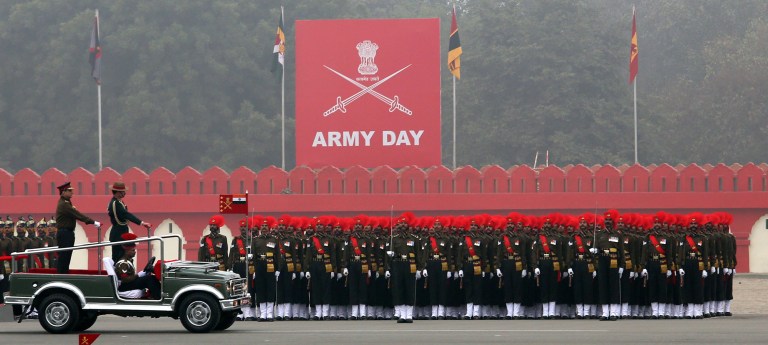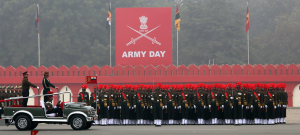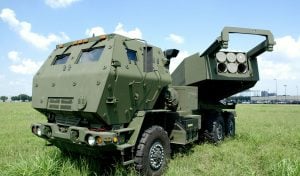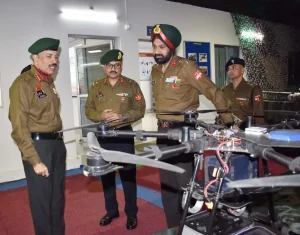India tested its first long range hypersonic missile on Saturday night, entering an elite club of nations that have the ability to launch a weapon that is almost impossible to intercept.
India Joins Elite Group of Nations With the Hypersonic Test
India tested its first long range hypersonic missile on Saturday night, entering an elite club of nations that have the ability to launch a weapon that is almost impossible to intercept. The land-launched missile has been under development for the past decade and several variants are expected to enter service in the coming years. “The missile was tracked by various range systems, deployed in multiple domains.
The flight data obtained from down range ship stations confirmed the successful terminal maneuvers and impact with high degree of accuracy,” officials said. The missile has been indigenously developed by laboratories of Dr APJ Abdul Kalam Missile complex, Hyderabad, along with various other DRDO laboratories and Industry Partners, they added.
Why Hypersonic Missiles Are Crucial
Hypersonic missiles are weapons capable of travelling at speeds five times the speed of sound. Their range typically varies between 6,125 km/h (Mach 5) and about 24,140 km/h (Mach 20). These speeds make them incredibly difficult to detect and intercept.
There are two primary types of hypersonic missiles-–Hypersonic Glide Vehicles (HGVs) and Hypersonic Cruise Missiles.
HGVs are launched like ballistic missiles using a rocket booster. After reaching a certain altitude, the HGV separates from the booster and glides toward its target, manoeuvring in flight to avoid interception.
Hypersonic Cruise Missiles use scramjet engines to sustain hypersonic speeds throughout their flight, flying at lower altitudes and also possessing manoeuvrability.
The development of hypersonic missiles is a significant achievement for India, as it presents several challenges, including extreme heat generation, precise control and guidance systems, detection and tracking difficulties, and the need for effective interception systems. The high speed and manoeuvrability of hypersonic missiles allow them to strike targets with precision. They can carry conventional or nuclear warheads, making them versatile for different types of missions.
Apart from India, several countries are also actively pursuing hypersonic missile programs, including the United States, Russia, and China.
